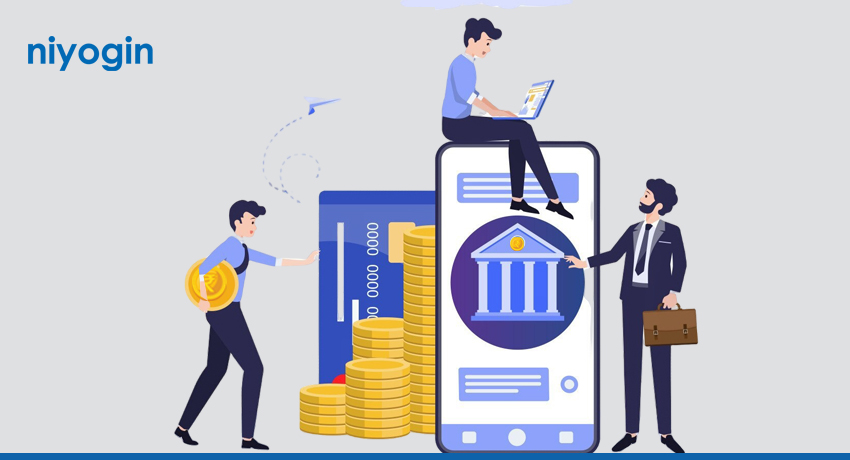The digital lending landscape in India has been undergoing a major transformation. The surge in smartphone penetration, coupled with a growing preference for online financial services, has led to an exponential rise in digital lending platforms. According to the India Digital Lending Report 2023, the digital lending market is expected to surpass ₹12 trillion by 2025, highlighting the increasing demand for seamless, accessible, and efficient lending experiences. However, as the sector grows, so does the need to enhance customer experience to stay competitive. Financial institutions must innovate continuously to meet evolving customer expectations while adhering to regulatory standards.
1. Simplifying the Application Process
The intricacy of the loan application procedure is one of the primary causes of consumer discontent with traditional lending systems. Lengthy documentation, numerous verification steps, and opaque procedures frequently deter potential borrowers. By expediting the loan application process, digital lending platforms can greatly enhance the client experience. Artificial intelligence (AI) and machine learning (ML) can help streamline the procedure by automating KYC (Know Your Customer) verification, cutting down on paperwork, and going paperless altogether. Nowadays, many platforms use real-time data, biometric verification, and digital signatures to quickly approve loans and authenticate identities. According to a PwC India report, 70% of consumers prefer to apply for loans online because it takes less time and effort. This change illustrates how crucial it is to streamline and expedite procedures.
2. Personalization through Data Analytics
Personalized experiences are no longer a luxury but an expectation. Data analytics plays a crucial role in providing a tailored experience to customers. Lenders can offer personalized loan products that meet individual needs by leveraging customer data—such as spending habits, transaction history, and credit scores.
Advanced analytics can also allow lenders to offer dynamic loan amounts and terms based on the borrower’s financial situation. AI-driven recommendations, such as providing customers with loan options that best suit their repayment abilities, can help foster trust and long-term relationships. According to a McKinsey & Company report, personalized financial products increase customer engagement by 80%, as they feel more aligned with their unique needs.
3. Enhancing Speed and Convenience
Speed is key to the success of the digital lending market. The ability to get payments quickly is one of the main draws of digital lending platforms. The approval process for loans under traditional lending systems can take days or even weeks. On the other hand, digital platforms can provide loan approvals almost instantly, and the money can be disbursed within a day. Fintech companies are increasingly using sophisticated algorithms that evaluate a borrower’s creditworthiness in real time, allowing for quicker loan approvals and decision-making. With features like round-the-clock accessibility, intuitive user interfaces, and easy navigation, customers now expect a flawless experience. According to Statista, 63% of Indian borrowers actually think that digital lending platforms offer a quicker, more effective experience than traditional banks, according to Statista.
4. Integrating AI for Better Customer Support
AI-powered chatbots and virtual assistants have revolutionized customer support in digital lending. These tools can answer queries, provide assistance with loan applications, and guide users through the entire process in real-time. AI-driven customer support is not only faster but also cost-effective, freeing up human agents to address more complex issues. A survey by Accenture found that 63% of customers prefer interacting with AI-powered chatbots for routine inquiries, as they expect quicker and more accurate responses. For digital lending platforms, integrating AI can reduce waiting times, improve service quality, and enhance customer satisfaction.
5. Building Transparency
Transparency is key to building trust with customers. Clear communication about loan terms, interest rates, fees, and repayment schedules reduces misunderstandings and dissatisfaction. Many digital lending platforms now outline charges upfront and in simple terms. Offering real-time loan status updates and payment reminders helps customers stay informed. According to the FIS Global Report, 74% of customers prefer lenders with transparent, easy-to-understand terms.
6. Leveraging Digital Payment Solutions
Incorporating seamless payment solutions into digital lending platforms enhances customer experience by enabling smooth repayment processes. With the growing adoption of digital wallets, UPI, and other online payment systems in India, borrowers can make quick, hassle-free repayments from their smartphones. Offering flexible payment options, including auto-debit services or pay-as-you-earn models, can improve loan repayment behavior and reduce defaults. Flexible repayment schedules, including variable payment options or the ability to reschedule payments when needed, further enhance customer satisfaction by catering to changing financial circumstances.
The Indian digital lending market is exploding, fueled by a surge in demand and a wave of innovative solutions. However, amidst this rapid growth, the customer experience remains the linchpin for success. To truly thrive, lenders must transcend mere convenience and deliver an unforgettable customer journey. This necessitates a radical reimagination of the lending process, from streamlining application procedures to forging unparalleled levels of transparency. Through the power of AI-powered personalization and prioritizing cybersecurity at every touchpoint, lenders can build lasting trust and cultivate a loyal customer base.
